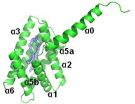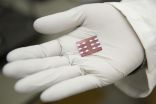(Press-News.org) CAMBRIDGE, MA -- In recent years, new strains of bacteria have emerged that resist even the most powerful antibiotics. Each year, these superbugs, including drug-resistant forms of tuberculosis and staphylococcus, infect more than 2 million people nationwide, and kill at least 23,000. Despite the urgent need for new treatments, scientists have discovered very few new classes of antibiotics in the past decade.
MIT engineers have now turned a powerful new weapon on these superbugs. Using a gene-editing system that can disable any target gene, they have shown that they can selectively kill bacteria carrying harmful genes that confer antibiotic resistance or cause disease.
Led by Timothy Lu, an associate professor of biological engineering and electrical engineering and computer science, the researchers described their findings in the Sept. 21 issue of Nature Biotechnology. Last month, Lu's lab reported a different approach to combating resistant bacteria by identifying combinations of genes that work together to make bacteria more susceptible to antibiotics.
Lu hopes that both technologies will lead to new drugs to help fight the growing crisis posed by drug-resistant bacteria.
"This is a pretty crucial moment when there are fewer and fewer new antibiotics available, but more and more antibiotic resistance evolving," he says. "We've been interested in finding new ways to combat antibiotic resistance, and these papers offer two different strategies for doing that."
Cutting out resistance
Most antibiotics work by interfering with crucial functions such as cell division or protein synthesis. However, some bacteria, including the formidable MRSA (methicillin-resistant Staphylococcus aureus) and CRE (carbapenem-resistant Enterobacteriaceae) organisms, have evolved to become virtually untreatable with existing drugs.
In the new Nature Biotechnology study, graduate students Robert Citorik and Mark Mimee worked with Lu to target specific genes that allow bacteria to survive antibiotic treatment. The CRISPR genome-editing system presented the perfect strategy to go after those genes.
CRISPR, originally discovered by biologists studying the bacterial immune system, involves a set of proteins that bacteria use to defend themselves against bacteriophages (viruses that infect bacteria). One of these proteins, a DNA-cutting enzyme called Cas9, binds to short RNA guide strands that target specific sequences, telling Cas9 where to make its cuts.
Lu and colleagues decided to turn bacteria's own weapons against them. They designed their RNA guide strands to target genes for antibiotic resistance, including the enzyme NDM-1, which allows bacteria to resist a broad range of beta-lactam antibiotics, including carbapenems. The genes encoding NDM-1 and other antibiotic resistance factors are usually carried on plasmids — circular strands of DNA separate from the bacterial genome — making it easier for them to spread through populations.
When the researchers turned the CRISPR system against NDM-1, they were able to specifically kill more than 99 percent of NDM-1-carrying bacteria, while antibiotics to which the bacteria were resistant did not induce any significant killing. They also successfully targeted another antibiotic resistance gene encoding SHV-18, a mutation in the bacterial chromosome providing resistance to quinolone antibiotics, and a virulence factor in enterohemorrhagic E. coli.
In addition, the researchers showed that the CRISPR system could be used to selectively remove specific bacteria from diverse bacterial communities based on their genetic signatures, thus opening up the potential for "microbiome editing" beyond antimicrobial applications.
To get the CRISPR components into bacteria, the researchers created two delivery vehicles — engineered bacteria that carry CRISPR genes on plasmids, and bacteriophage particles that bind to the bacteria and inject the genes. Both of these carriers successfully spread the CRISPR genes through the population of drug-resistant bacteria. Delivery of the CRISPR system into waxworm larvae infected with a harmful form of E. coli resulted in increased survival of the larvae.
The researchers are now testing this approach in mice, and they envision that eventually the technology could be adapted to deliver the CRISPR components to treat infections or remove other unwanted bacteria in human patients.
High-speed genetic screens
Another tool Lu has developed to fight antibiotic resistance is a technology called CombiGEM. This system, described in the Proceedings of the National Academy of Sciences the week of Aug. 11, allows scientists to rapidly and systematically search for genetic combinations that sensitize bacteria to different antibiotics.
To test the system, Lu and his graduate student, Allen Cheng, created a library of 34,000 pairs of bacterial genes. All of these genes code for transcription factors, which are proteins that control the expression of other genes. Each gene pair is contained on a single piece of DNA that also includes a six-base-pair barcode for each gene. These barcodes allow the researchers to rapidly identify the genes in each pair without having to sequence the entire strand of DNA.
"You can take advantage of really high-throughput sequencing technologies that allow you, in a single shot, to assess millions of genetic combinations simultaneously and pick out the ones that are successful," Lu says.
The researchers then delivered the gene pairs into drug-resistant bacteria and treated them with different antibiotics. For each antibiotic, they identified gene combinations that enhanced the killing of target bacteria by 10,000- to 1,000,000-fold. The researchers are now investigating how these genes exert their effects.
"This platform allows you to discover the combinations that are really interesting, but it doesn't necessarily tell you why they work well," Lu says. "This is a high-throughput technology for uncovering genetic combinations that look really interesting, and then you have to go downstream and figure out the mechanisms."
Once scientists understand how these genes influence antibiotic resistance, they could try to design new drugs that mimic the effects, Lu says. It is also possible that the genes themselves could be used as a treatment, if researchers can find a safe and effective way to deliver them.
CombiGEM also enables the generation of combinations of three or four genes in a more powerful way than previously existing methods. "We're excited about the application of CombiGEM to probe complex multifactorial phenotypes, such as stem cell differentiation, cancer biology, and synthetic circuits," Lu says.
INFORMATION:
The research was funded by the National Institutes of Health, the Defense Threat Reduction Agency, the U.S. Army Research Laboratory, the U.S. Army Research Office, the Office of Naval Research, and the Ellison Foundation.
Written by Anne Trafton, MIT News Office
Battling superbugs
2014-09-21
ELSE PRESS RELEASES FROM THIS DATE:
Immune system of newborn babies is stronger than previously thought
2014-09-21
Contrary to what was previously thought, newborn immune T cells may have the ability to trigger an inflammatory response to bacteria, according to a new study led by King's College London. Although their immune system works very differently to that of adults, babies may still be able to mount a strong immune defense, finds the study published in the journal Nature Medicine.
Our immune system is made up of several different types of immune cells, including neutrophils which play an important role in the frontline defense against infection, and lymphocytes: B cells which ...
Uncovering the forbidden side of molecules
2014-09-21
Researchers at the University of Basel in Switzerland have succeeded in observing the "forbidden" infrared spectrum of a charged molecule for the first time. These extremely weak spectra offer perspectives for extremely precise measurements of molecular properties and may also contribute to the development of molecular clocks and quantum technology. The results were published in the scientific journal Nature Physics.
Spectroscopy, the study of the interaction between matter and light, is probably the most important method for investigating the properties of molecules. ...
Magnetic fields make the excitons go 'round
2014-09-21
CAMBRIDGE, Mass-- A major limitation in the performance of solar cells happens within the photovoltaic material itself: When photons strike the molecules of a solar cell, they transfer their energy, producing quasi-particles called excitons — an energized state of molecules. That energized state can hop from one molecule to the next until it's transferred to electrons in a wire, which can light up a bulb or turn a motor.
But as the excitons hop through the material, they are prone to getting stuck in minuscule defects, or traps — causing them to release their energy ...
Engineered proteins stick like glue -- even in water
2014-09-21
CAMBRIDGE, MA -- Shellfish such as mussels and barnacles secrete very sticky proteins that help them cling to rocks or ship hulls, even underwater. Inspired by these natural adhesives, a team of MIT engineers has designed new materials that could be used to repair ships or help heal wounds and surgical incisions.
To create their new waterproof adhesives, the MIT researchers engineered bacteria to produce a hybrid material that incorporates naturally sticky mussel proteins as well as a bacterial protein found in biofilms — slimy layers formed by bacteria growing on a surface. ...
Cancer cells adapt energy needs to spread illness to other organs
2014-09-21
Want to understand why cancer cells metastasize? Think of Sparta.
Ancient Greek warriors were fed a special diet that better prepared them for the demands of battle on distant fields. Cancer cells that metastasize may do the same thing according to a new study revealing previously unknown differences between cancer cells that continue to grow at the original tumor site, and those that travel to other organs.
Given that a cancer cell's unyielding ability to metastasize is the primary cause of cancer-related death, understanding how they successfully migrate can be lifesaving.
Scientists ...
Stanford researchers create 'evolved' protein that may stop cancer from spreading
2014-09-21
VIDEO:
Early but promising tests in lab mice suggest that a bioengineered 'decoy' protein, administered intravenously, can halt the spread of cancer from the original tumor site. Years of subsequent tests...
Click here for more information.
A team of Stanford researchers has developed a protein therapy that disrupts the process that causes cancer cells to break away from original tumor sites, travel through the blood stream and start aggressive new growths elsewhere in the body.
This ...
Smallest possible diamonds form ultra-thin nanothreads
2014-09-21
VIDEO:
For the first time, scientists have discovered how to produce ultra-thin 'diamond nanothreads' that promise extraordinary properties, including strength and stiffness greater than that of today's strongest nanotubes and polymers....
Click here for more information.
For the first time, scientists have discovered how to produce ultra-thin "diamond nanothreads" that promise extraordinary properties, including strength and stiffness greater than that of today's strongest ...
New cancer drug target involving lipid chemical messengers
2014-09-19
PHILADELPHIA — More than half of human cancers have abnormally upregulated chemical signals related to lipid metabolism, yet how these signals are controlled during tumor formation is not fully understood.
Youhai Chen, PhD, MD, and Svetlana Fayngerts, PhD, both researchers in the department of Pathology and Laboratory Medicine at the Perelman School of Medicine, University of Pennsylvania, and colleagues report that TIPE3, a newly described oncogenic protein, promotes cancer by targeting these pathways.
Lipid second messengers play cardinal roles in relaying and amplifying ...
Melanoma risk found to have genetic determinant
2014-09-19
(Lebanon, NH 9/18/14)— A leading Dartmouth researcher, working with The Melanoma Genetics Consortium, GenoMEL, an international research consortium, co-authored a paper published today in the Journal of the National Cancer Institute that proves longer telomeres increase the risk of melanoma.
"For the first time, we have established that the genes controlling the length of these telomeres play a part in the risk of developing melanoma," said lead author of the study Mark Iles, PhD, School of Medicine at the University of Leeds (UK).
Telomeres are a part of the genome ...
UChicago-Argonne National Lab team improves solar-cell efficiency
2014-09-19
New light has been shed on solar power generation using devices made with polymers, thanks to a collaboration between scientists in the University of Chicago's chemistry department, the Institute for Molecular Engineering, and Argonne National Laboratory.
Researchers identified a new polymer — a type of large molecule that forms plastics and other familiar materials — which improved the efficiency of solar cells. The group also determined the method by which the polymer improved the cells' efficiency. The polymer allowed electrical charges to move more easily throughout ...





